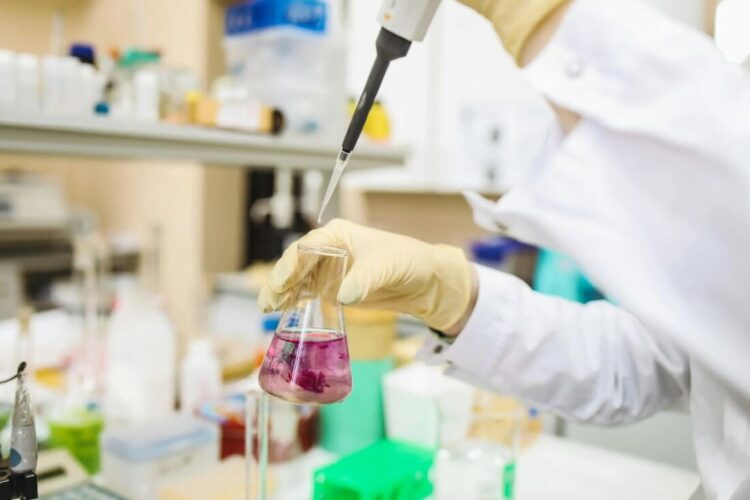Artificial intelligence (AI) has revealed an astonishing 160,000 new virus species, offering a groundbreaking perspective on Earth’s biodiversity. This discovery unlocks new potential for future research into viral ecosystems.
The Expanding Virosphere: Hidden Worlds Revealed
In a landmark study, AI has revolutionized how we understand the hidden virosphere—viruses that exist across Earth’s extreme environments, from hydrothermal vents to hot springs. These RNA viruses, often elusive to traditional methods, were uncovered through a machine-learning tool, LucaProt, which analyzed genetic sequences from public databases. Many of these sequences, often referred to as “dark matter,” were so divergent that they had remained unknown until now. According to Professor Edward Holmes from the University of Sydney, this breakthrough opens a door to millions more undiscovered viruses.
AI’s ability to scan such vast datasets represents a critical leap in the field of virology. The potential implications for global health and ecosystems are immense. Beyond the viruses that cause disease, these newly discovered RNA viruses may hold clues to ancient evolutionary processes, as they thrive in harsh environments where other life forms struggle.
AI’s Role in Virus Discovery
The tool behind this breakthrough, LucaProt, leveraged AI’s capacity to process vast amounts of genetic data, which allowed scientists to categorize and identify viruses that had previously been invisible. Unlike traditional methods that rely on bioinformatics pipelines, AI vastly accelerates this process. As noted by Professor Mang Shi from Sun Yat-sen University, the AI method offers unprecedented sensitivity and specificity in virus detection. It not only fast-tracks discoveries but also deepens our understanding of viral diversity on a global scale.
The discovery has redefined the boundaries of virology. Before AI, the manual categorization of viral genomes was limited by both time and technological constraints. Researchers could only explore a fraction of viral diversity using older methods. Now, AI promises a future where the identification of viruses—bacteria, and parasites—becomes an increasingly streamlined process.
Viruses and Earth’s Ecosystems: A New Understanding
Beyond their association with human disease, viruses play crucial roles in the world’s ecosystems. The new viruses uncovered through AI are not merely harmful agents but key players in Earth’s biosphere. Their ability to adapt and thrive in extreme environments, such as the atmosphere and hydrothermal vents, suggests they may have deep evolutionary roots.
Professor Holmes highlighted how this viral tenacity could offer valuable clues into life’s earliest forms. The discovery opens up a fascinating possibility: that some viruses may predate other complex organisms, offering scientists a window into life’s very origins. These viruses could hold the key to understanding how life survived and evolved in Earth’s most hostile environments.
AI and the Future of Biological Discovery
The integration of AI in virology does not stop with viruses. LucaProt represents the start of a broader movement where AI could help unravel many mysteries in biology. AI’s advanced algorithms have the potential to transform fields such as evolutionary biology, ecology, and even medicine. According to Dr. Zhao-Rong Li from the Apsara Lab of Alibaba Cloud Intelligence, LucaProt’s success marks a shift toward the digital deconstruction of biological systems, with AI as a central player in biological exploration.
The implications are profound. As AI technologies improve, researchers foresee even more breakthroughs in understanding the diversity and functions of other forms of life. AI can help decode the genetic sequences of complex organisms that, until now, have been difficult to study. From identifying unknown bacterial species to mapping the genetic underpinnings of ecosystems, AI could become an indispensable tool in biological research.
Implications for Global Health
While the discovery of new viruses often invokes fears of future pandemics, many of these viruses do not pose direct threats to human health. Instead, their study could lead to positive outcomes, such as better understanding viral evolution and creating new antiviral treatments. Some of these viruses may even be beneficial, playing unknown but vital roles in balancing ecosystems and maintaining biodiversity.
AI-driven discoveries offer the scientific community a significant advantage in anticipating and managing viral threats. As AI tools improve, researchers can rapidly identify potentially dangerous viruses and track their evolution over time. Such advancements could lead to the early detection of emerging viruses, preventing future outbreaks before they reach pandemic levels.
The Ethical and Practical Considerations
With great power, however, comes ethical responsibility. The integration of AI into virology and broader biological research raises questions about data privacy, the misuse of genetic information, and the potential monopolization of AI tools by large tech companies. Researchers are already calling for international regulations to ensure that the benefits of AI-driven discoveries are shared equitably across countries and institutions.
Moreover, the use of AI in biology requires a deep commitment to transparency and collaboration. As AI models like LucaProt become more sophisticated, there is a need for open databases where researchers from all over the world can contribute to and benefit from new discoveries. The goal is to create an interconnected network of AI-driven research that transcends borders and serves humanity’s collective knowledge.
Conclusion: A New Frontier in Science
The discovery of over 160,000 virus species through AI represents a major milestone in scientific exploration. It pushes the boundaries of what is known about Earth’s biodiversity and offers a glimpse into the vast unseen world that exists alongside us. With AI leading the way, the future of virology—and biological science as a whole—is filled with potential. As Professor Holmes suggested, the discoveries made so far are likely only the beginning. The next step is to apply these AI methods on a broader scale and uncover what other secrets the natural world holds.
AI’s role in biological exploration is just beginning, and who knows what surprises are yet to come?




